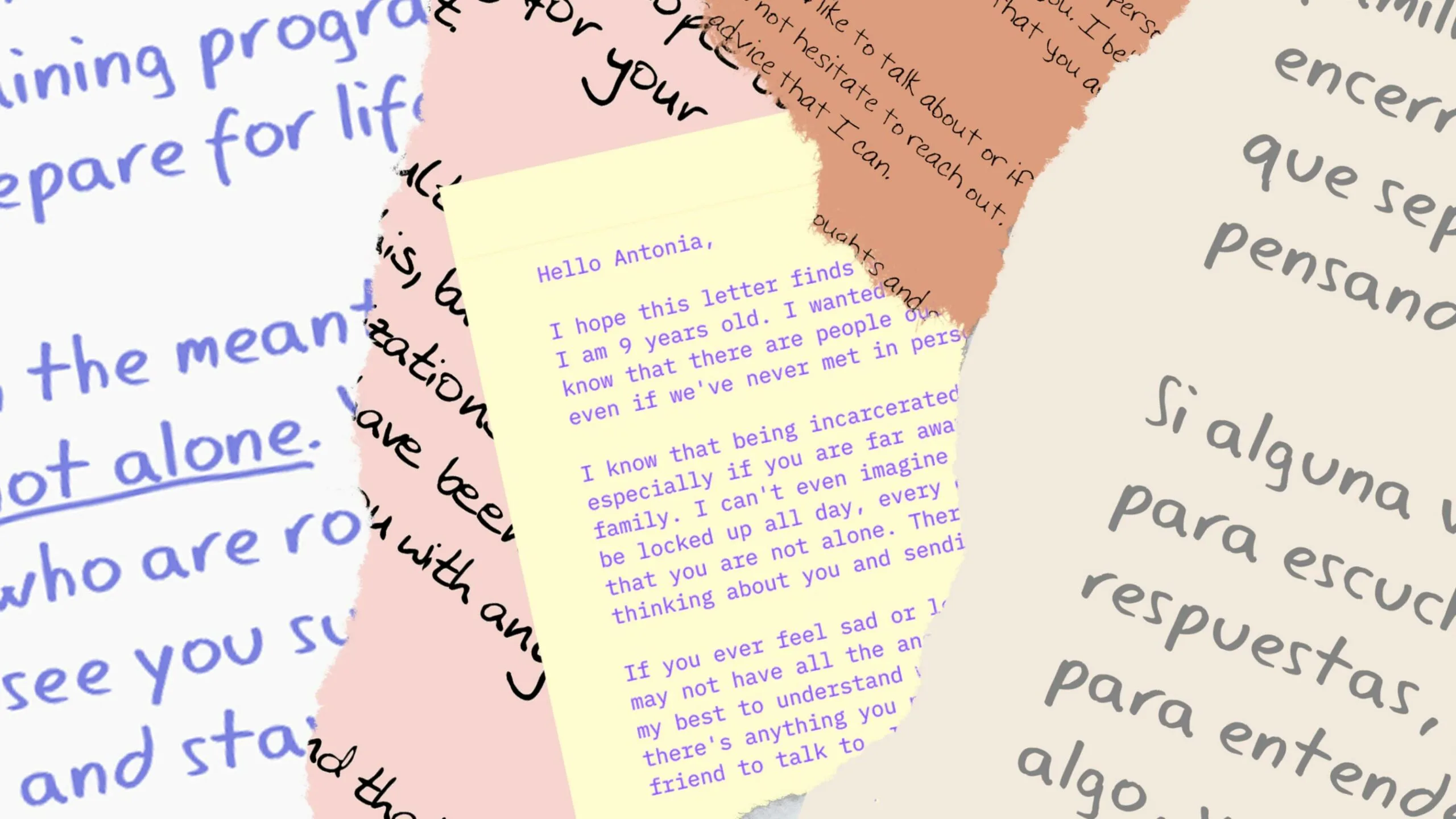How to Write a Letter to an Incarcerated Person
On National Card and Letter Writing Month, here’s how you can send a letter to someone who is incarcerated.
04.21.23 By Meghan Nguyen
April is National Card and Letter Writing Month, designated by the United States Postal Service as “an annual celebration of handwritten correspondence.” To mark the occasion, we’re sharing a guide on how to write to someone who is incarcerated.
For those incarcerated, including those who have been wrongly convicted, writing and receiving letters and building connections with people outside of prison can provide a sense of hope, validation, and encouragement. Exchanging letters with incarcerated individuals can also offer a unique insight into the criminal justice system and be an opportunity to learn about different perspectives and life experiences for both the recipient and the sender.
Who to write to
There are several ways to find an incarcerated person to write to. If you already have a personal connection to someone incarcerated, you’ll need their full name, the ID number they have been assigned by the department of corrections, and the full name and address of the facility where they are housed in order to mail a letter. You can also find an organization that connects volunteers with incarcerated individuals who are looking for pen pals. These organizations can provide a safe and structured way to start a pen pal relationship.
Here are some organizations that can help you find someone to write to:
Things to consider when writing to someone who is incarcerated
Before you begin writing your letter, check the prison’s mail rules by doing an internet search for “mail at ___ prison” or by calling the prison directly.
Prisons seldom allow crayon, glitter, permanent marker, colored pencils, stickers, paint, or perfume in the letters they receive. It’s best to stick to black or blue ink (typed or handwritten) on plain white paper, mailed in a plain white envelope. You can enclose photos or drawings that are 8 x 10 inches or smaller.
The envelope and contents of your letter can often get separated when it arrives at the prison. To ensure that everything you’re sending makes it to your intended recipient, number the pages, write your recipient’s legal name and ID number on each page, and include your name and return address in the letter itself as well as the envelope. It also helps to list everything you’ve enclosed at the top of your letter.
What to write
If you’re feeling nervous about writing to a stranger or experiencing writer’s block, here are some useful guidelines to consider when drafting your initial letter:
- Introduce yourself — tell them your name, general location, and how you found out about them.
- Share things about yourself and the outside world. Don’t be afraid to share details — writing that vividly describes sounds, smells, tastes, images, and feelings can be very impactful for an incarcerated person who may not have access to those things.
- Ask questions to get to know them — such as how they’re doing, plans they have for the future, and what their interests are.
- Consider sharing pictures, poetry, song lyrics, or a drawing.
To avoid any misunderstandings, it’s crucial to be transparent about how often you’ll be able to write. Only commit to writing as frequently as you are certain you will be able to maintain. If you anticipate difficulties maintaining regular correspondence, it’s best to inform your recipient beforehand. Conversely, if you intend to maintain an ongoing, consistent exchange, communicate this to them. It can be very challenging for individuals who are incarcerated to receive a letter from someone who initially pledges to maintain regular correspondence but then fails to follow through.
Furthermore, it’s essential to exercise discretion when writing your letters. Law enforcement or corrections staff may read your message. Therefore, it is important to avoid asking any sensitive questions or including any sensitive information, particularly anything pertaining to their conviction or legal proceedings, as it could impact their case or be used against them in the future.
Ultimately, the value in writing a letter to an incarcerated person lies in the potential for meaningful human connection and the opportunity to learn from and support each other.
By following some basic guidelines and being transparent about your commitment to writing, you can create a bridge of understanding and empathy between yourself and those who are incarcerated. National Card and Letter Writing Month is an excellent time to start, but the benefits of letter-writing and the meaningful connections you make can last long beyond this month.
Leave a Reply
Thank you for visiting us. You can learn more about how we consider cases here. Please avoid sharing any personal information in the comments below and join us in making this a hate-speech free and safe space for everyone.
October 29, 2024 at 9:13 am
April 9, 2024 at 7:54 pm
Justin Cornell 1738299 has been wrongfully convicted in 2016. His habeas corpus petition has been pending since 2019. The Virginia Beach court does nothing. The AG is ignoring it. Justin could use a letter, he is at Lawrenceville Correctional Center
1607 Planters Rd
Lawrenceville Va. 23868

Great info.my husband is in jail with a 350,000 bond so I was looking on how to address a envelope and found d way more than I expected! Thanks for the letter writing tips. Very useful information.